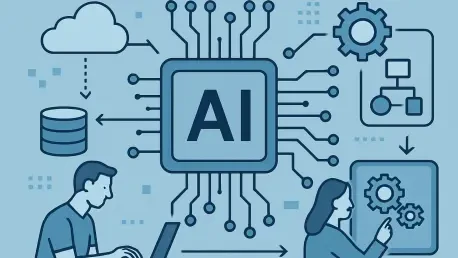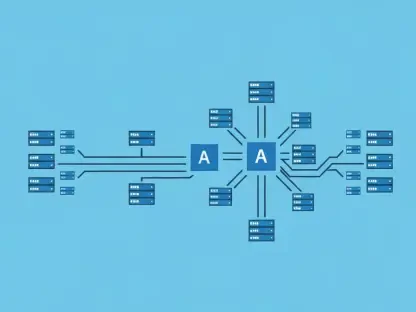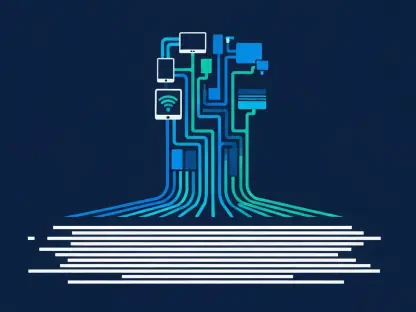Imagine a world where AI-driven applications seamlessly communicate with diverse tools and models, effortlessly orchestrating complex workflows within development environments. This is no longer a distant vision but a tangible reality with the Spring AI MCP (Model Context Protocol). As a standardized communication framework, it bridges the gap between AI clients and servers, enabling developers to build agentic, conversational systems with unprecedented ease. This review delves into the transformative potential of MCP Protocol, exploring its core features, real-world impact, and the challenges it faces in shaping the future of AI application development.
Core Features Driving Seamless Integration
Stdio Communication and Logging Mechanisms
At the heart of MCP Protocol lies its stdio-based communication system, a robust mechanism that facilitates smooth interaction between servers and clients. This approach leverages standard input and output streams to transmit data, often in JSON format, ensuring compatibility across various platforms. Its simplicity allows developers to integrate AI models into existing systems without requiring extensive overhauls, making it a practical choice for rapid deployment.
However, logging this data over stdio presents notable challenges, particularly due to the verbosity of MCP JSON outputs. Capturing and analyzing these logs for debugging or monitoring can be cumbersome without specialized tools. Innovative solutions like Tee[Input/Output]Stream have emerged to address this, enabling simultaneous logging to files and console outputs, thus providing developers with critical insights into protocol interactions.
The importance of effective logging cannot be overstated in maintaining system reliability. It serves as a window into the operational dynamics of MCP-based applications, allowing for real-time troubleshooting and performance optimization. As environments grow more complex, such mechanisms become indispensable for ensuring consistent functionality.
Tool and Resource Integration Capabilities
Another cornerstone of MCP Protocol is its ability to integrate tools and resources, empowering dynamic interactions with large language models (LLMs). Annotations such as @Tool and @McpResource play a pivotal role here, defining specific functionalities and providing contextual data to enhance AI responses. These annotations enable developers to specify callable functions and relevant datasets, streamlining the process of tailoring AI behavior to specific needs.
This integration shines in practical scenarios, such as tool invocation with user permission in platforms like GitHub Copilot. By allowing controlled access to external functions, MCP ensures that AI systems remain secure while offering enhanced capabilities like code generation or data retrieval. Such features transform static AI models into interactive agents capable of addressing user queries with precision.
Beyond individual tools, the protocol’s resource management fosters a richer context for AI operations. Resources, often overlooked in some client implementations, can significantly boost the relevance of AI outputs when properly utilized, paving the way for more intelligent and responsive applications across diverse domains.
Innovations Shaping MCP’s Trajectory
Recent advancements in MCP Protocol implementations reflect a commitment to staying ahead of technological demands. Updates in SDK versions, starting from spring-ai-bom/1.0.0-M6 to more current iterations over the past few years, have introduced refined capabilities and improved stability. These updates address earlier limitations, enhancing compatibility with modern development stacks.
A notable trend is the increasing adoption of agentic workflows and LLM orchestration within development environments. MCP Protocol has adapted to support these paradigms, enabling more autonomous AI behaviors that can manage complex tasks like file creation or interactive chat within integrated development environments (IDEs). This shift underscores a broader movement toward smarter, more independent AI systems.
Community-driven efforts also play a crucial role in MCP’s evolution. Projects like spring-ai-community/mcp-annotations are expanding the protocol’s flexibility, introducing new annotations and methodologies that cater to emerging use cases. This collaborative spirit ensures that MCP remains responsive to developer needs, fostering a vibrant ecosystem of innovation.
Real-World Impact Across Industries
The practical applications of MCP Protocol are as diverse as they are impactful. A prime example is its use in building Spring AI-based MCP servers for integration with GitHub Copilot. This setup allows developers to leverage AI for code generation and refactoring, significantly boosting productivity within IDEs like Eclipse by providing context-aware suggestions and automations.
In the e-commerce sector, MCP tools have been instrumental in simulations like the Brand Z Sports Store, where they manage inventory queries and transaction processes. Here, the protocol enables AI to handle user requests for item details, pricing, and cart management, creating a seamless shopping experience driven by conversational interactions.
Unique use cases further highlight MCP’s versatility, such as agentic LLM workflows that facilitate interactive chat and file creation directly within development tools. These implementations demonstrate how the protocol transcends traditional AI boundaries, offering tailored solutions that enhance user engagement and operational efficiency in varied contexts.
Challenges Hindering Broader Adoption
Despite its strengths, MCP Protocol faces technical hurdles that can impede its effectiveness. The verbosity of MCP logs remains a persistent issue, often overwhelming developers with excessive data during debugging. Custom logging solutions are sometimes necessary, but they add layers of complexity to already intricate systems, posing a barrier to seamless adoption.
Compatibility issues also surface in certain client environments, such as GitHub Copilot, where resource discovery is not fully supported. Workarounds involving @Tool annotations are often required to bridge these gaps, but they are not always ideal for long-term scalability. This limitation highlights a need for more universal standards in client-server interactions.
Efforts to address these challenges are underway, with community-driven solutions focusing on improving tool generality and system scalability. Enhancing the flexibility of tool definitions and refining resource handling mechanisms are key areas of focus, aiming to make MCP more accessible and adaptable to a wider range of applications.
Future Directions for Enhanced Capabilities
Looking ahead, MCP Protocol is poised for significant evolution, particularly in its support for HTTP Server-Sent Events (SSE). This advancement promises to extend its applicability to mobile and online platforms, enabling real-time, event-driven interactions that could redefine user experiences in dynamic environments.
Anticipated breakthroughs include deeper integration with LLMs for handling dynamic prompts and completions directly within clients. Such capabilities would allow for more nuanced and context-sensitive AI responses, further blurring the lines between automated systems and human-like conversational agents in operational settings.
The long-term impact of MCP on AI application development appears profound, with the potential to drive smarter, more conversational systems across sectors. As it continues to mature, the protocol could become a foundational element in creating interconnected, intelligent ecosystems that empower both developers and end-users with unprecedented control and insight.
Reflecting on MCP’s Journey and Next Steps
Looking back, the exploration of MCP Protocol revealed a robust framework that excelled in facilitating AI-driven interactions through stdio communication and agentic workflows. Its ability to integrate tools and resources proved transformative, even as challenges like log verbosity and compatibility gaps tested its resilience. The real-world applications showcased its versatility, from enhancing developer tools to powering e-commerce simulations.
Moving forward, stakeholders should prioritize refining logging mechanisms to reduce complexity, ensuring that debugging remains accessible to all skill levels. Collaborative efforts to standardize resource discovery across clients will also be critical in unlocking MCP’s full potential. By addressing these areas, the technology can pave the way for even broader adoption, inspiring the next generation of AI-driven innovations.









